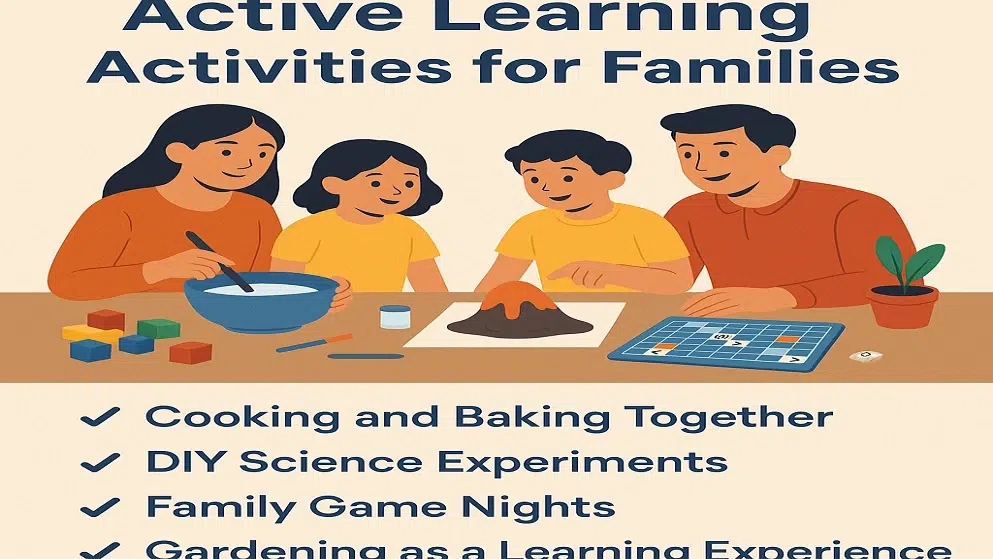In today’s digital age, families often struggle to find meaningful ways to connect while promoting learning and development. Active learning activities famparentlife provides the perfect solution—blending education, interaction, and quality time. Whether you’re a parent looking to support your child’s growth or a family seeking engaging ways to bond, incorporating active learning activities famparentlife into daily routines can make a lasting impact.
This comprehensive guide explores the benefits, practical ideas, and strategies for implementing active learning activities famparentlife, ensuring an enriching experience for all ages.
What Are Active Learning Activities?
Active learning activities famparentlife are hands-on, interactive experiences that require participation, critical thinking, and problem-solving. Unlike passive activities (such as watching TV or listening to lectures), active learning engages the mind and body, making it more effective for retention and skill development.
For families, these activities:
-
Strengthen relationships through collaboration.
-
Enhance cognitive and social skills.
-
Make learning enjoyable and memorable.
Read More : fpmomlife parenting tips
Why Active Learning Matters in Family and Parent Life
1. Strengthens Family Bonds
Working together on active learning activities famparentlife—like cooking, gardening, or solving puzzles—fosters teamwork and communication while creating lasting memories.
2. Boosts Cognitive and Emotional Development
Children (and adults!) learn best by doing. Active learning activities famparentlife improve:
-
Problem-solving and creativity.
-
Emotional intelligence through discussions and role-playing.
3. Encourages Lifelong Learning
When learning is fun, kids develop a natural curiosity. Parents also benefit by staying mentally engaged.
4. Reduces Screen Time
Replacing passive screen time with active learning activities famparentlife promotes healthier habits.
Read More : parenting guide fpmomlife
10 Engaging Active Learning Activities for Families
1. Cooking and Baking Together
Skills Learned: Math (measuring), science (chemical reactions), and life skills.
Ideas:
-
Younger kids: Mixing, washing veggies.
-
Older kids: Following recipes, experimenting with flavors.
2. DIY Science Experiments
Skills Learned: Scientific thinking, observation, and curiosity.
Simple Experiments:
-
Volcano Eruption (Baking soda + vinegar)
-
Rainbow Milk (Food coloring + dish soap)
3. Family Game Nights with Educational Twists
Skills Learned: Strategy, vocabulary, patience.
Game Ideas:
-
Scrabble (language skills)
-
Chess (critical thinking)
4. Gardening as a Learning Experience
Skills Learned: Biology, responsibility, environmental awareness.
Activities:
-
Planting seeds and tracking growth.
-
Learning about composting.
5. Outdoor Scavenger Hunts
Skills Learned: Observation, teamwork, nature appreciation.
How to Do It:
-
Create a list of items to find (e.g., a smooth rock, a yellow flower).
6. Storytelling and Creative Role-Playing
Skills Learned: Imagination, language, empathy.
Ideas:
-
Take turns building a family story.
7. Building and Engineering Challenges
Skills Learned: Creativity, physics, perseverance.
Materials to Use:
-
LEGO, blocks, or recycled materials.
8. Music and Movement Activities
Skills Learned: Rhythm, coordination, emotional expression.
Ideas:
-
Family dance-offs.
9. Family Book Club
Skills Learned: Reading comprehension, critical thinking.
How to Start:
-
Pick a book suitable for all ages.
10. Volunteering as a Family
Skills Learned: Empathy, social responsibility.
Ideas:
-
Helping at a food bank.
How to Make Active Learning a Regular Part of Family Life
-
Schedule Dedicated Time – Set weekly “Learning Adventures” (e.g., Science Saturdays).
-
Let Kids Lead Sometimes – Children engage more when they choose active learning activities famparentlife.
-
Keep It Simple and Fun – Everyday tasks can be learning opportunities.
-
Connect Activities to Real Life – Grocery shopping? Teach budgeting.
Final Thoughts
It transform ordinary moments into opportunities for growth and connection. By integrating hands-on, engaging experiences, families can nurture curiosity, strengthen bonds, and create a lifelong love for learning.
Read More : fpmomlife parenting guideline from famousparenting
FAQs About Active Learning Activities for Family and Parent Life
1. What if my child loses interest quickly?
Keep sessions short (15-30 minutes) and switch active learning activities famparentlife often.
2. How can working parents fit this into a busy schedule?
Incorporate learning into daily routines, like cooking together.
3. Are these activities suitable for different age groups?
Yes! Adapt complexity—toddlers sort colors, teens debate or build projects.
Read Also : look what mom found , lwmfhotels discount codes from lookwhatmumfound
